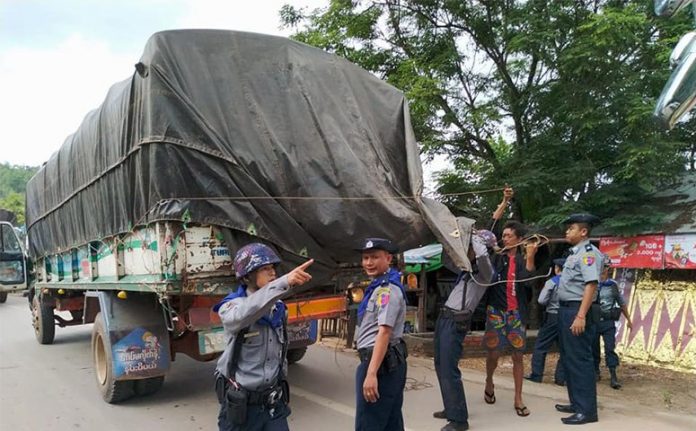Hpa-an Township residents in the Karen State capital told DVB that the military released 93 of the 359 trucks it had seized transporting cargo from Thailand into Myanmar on March 10.
“The investigation is still underway. There were many trucks that had no license or registration and were connected to armed groups,” a Hpa-An resident told DVB.
Another resident said that the 93 trucks were released because they had paid custom duty fees to the Myanmar Customs Department.
The Southeastern Regional Military Command (RMC) based in Mawlamyine, the capital of Mon State, ordered the seizure of the 359 cargo trucks on March 5.
It alleged they were carrying illegal goods to armed resistance groups based along the Myanmar-Thailand border.
Inspections have been carried out since Oct. 9, after regime Deputy Prime Minister Soe Win instructed authorities to search cargo trucks for “illegal goods.”
The Democratic Karen Buddhist Army (DKBA) told DVB that the KNU/KNLA Peace Council was the sole armed group responsible for transporting illegal cargo from Thailand into Myanmar.
But between the Thai-Myanmar border town of Myawaddy to Hpa-An there are several different armed groups and pro-regime forces. Myawaddy is located 140 miles (225 km) east of Hpa-An and is across from Mae Sot, Tak Province of Thailand.
“Truck drivers must pay fees [to each armed group] along the [road] to Hpa-An,” a merchant from Myawaddy told DVB on the condition of anonymity.
Cargo truck drivers transporting goods to Hpa-An from Myawaddy are restricted to taking the old Myawaddy-Kawkareik Dawna mountain road. They are not permitted on the stretch of the Asia Highway between Myawaddy and Kawkareik, which is located 55 miles (88 km) west of Hpa-An.
The vehicles can also use alternative routes such as the Kyawkhoe-Htokawko road, Thitkatay road, and 1018 road through Karen State.
Fighting between Karen resistance and regime forces has continued around Kawkareik following the seizure of Myawaddy by the Karen National Union (KNU) for 12 days last April. In response, the regime launched a counteroffensive called “Operation Aung Zeya.”



